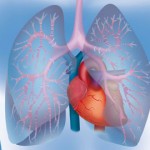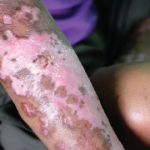Enabling early diagnosis & informed decision making
WASHINGTON, D.C.—Although most medical treatments are designed for the so-called average patient and use a one-size-fits-all approach, precision medicine seeks to tailor treatment to individuals based on their genes, environment, lifestyles and a host of other factors unique to them. At ACR Convergence 2024, the session titled, State of the Art Lecture: Precision Medicine in Systemic Sclerosis, brilliantly applied the concepts behind precision medicine to the care of patients suffering from scleroderma.
Very Early Diagnosis

Dr. Del Galdo
The first speaker was Francesco Del Galdo, MD, professor of experimental medicine (consultant), head of scleroderma program at the Leeds Institute of Rheumatic and Musculoskeletal Medicine, Leeds, U.K. Dr. Del Galdo is the current president of the European Scleroderma Trials and Research Group (EUSTAR) and, in this capacity, has been at the forefront of helping establish criteria for the very early diagnosis of systemic sclerosis (VEDOSS).
In 2011, the preliminary criteria for VEDOSS were first developed using a Delphi model among international experts on scleroderma. These criteria included several different domains, including skin (i.e., puffy fingers/swollen digits turning into sclerodactyly); vascular (i.e., Raynaud’s, abnormal capillaroscopy with scleroderma pattern) and laboratory (i.e., antinuclear, anticentromere and antitopoisomerase-I antibodies).1
In 2021, the VEDOSS criteria were updated, making the only mandatory, first-step criterion to be evaluated the presence of Raynaud’s phenomenon. Using this approach, the combination of Raynaud’s phenomenon associated with antibodies specific to systemic sclerosis—and anti-nuclear antibody positivity—and puffy hands had the highest risk of progression to meeting the 2013 ACR/EULAR classification criteria for systemic sclerosis (i.e., 94% of patients with these criteria ultimately progressed).1
Dr. Del Galdo explained that having a robust and validated definition for VEDOSS is important so as not to miss patients who are early in their course of disease. He pointed out that pulmonary hypertension may develop up to 10–15 years after the initial onset of disease.2 Dr. Del Galdo also noted that, for a patient to have a mean pulmonary arterial pressure of ≥25 mm/Hg on right heart catheterization—therefore meeting the definition of pre-capillary pulmonary hypertension from the 2022 European Society of Cardiology and European Respiratory Society—more than 50% of alveoli need to be affected by the patient’s disease.
Although clinicians are quick to think of digital ulcers and telangiectasias as signs of scleroderma, musculoskeletal and gastrointestinal symptoms may actually be among the first non-Raynaud’s symptoms found in patients with severe skin disease. Thus, clinicians may fail to ask about these symptoms or identify signs of involvement on the physical exam, thereby missing the opportunity to reduce diagnostic delay for patients.


